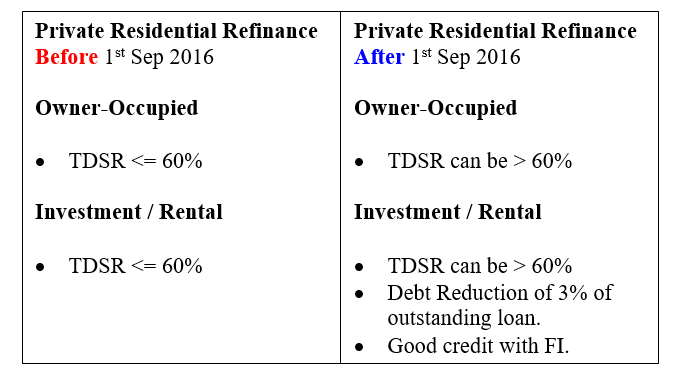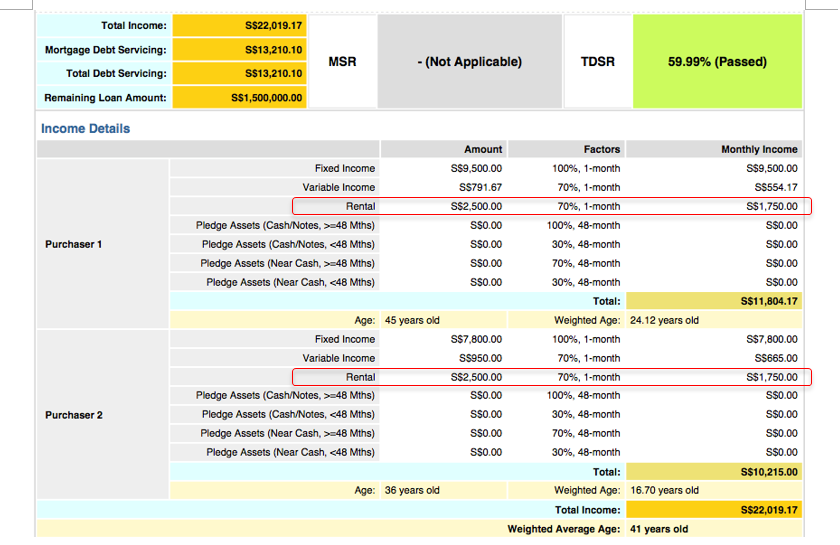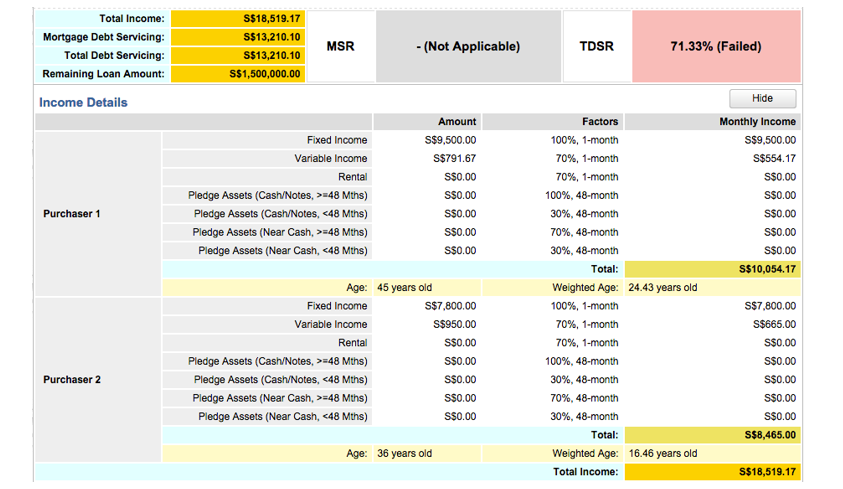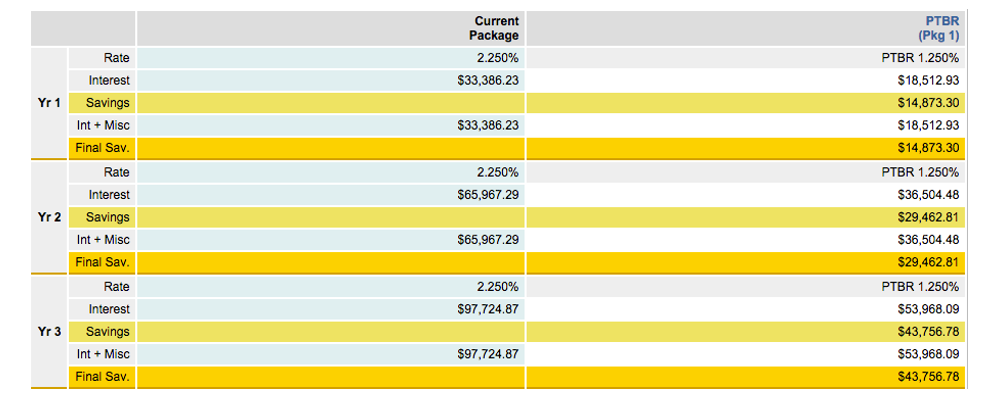MAS updates TDSR rules for Refinancing – Sep 2016
(Singapore Property Regulations from Feb 2014 till Sep 2016)
Paul HO (iCompareLoan.com)
The chronology of earlier regulations can be found here.
14 Sep 2009 till Aug 2013
Aug 2013 till Feb 2014
With a long absence of regulatory announcements from MAS, we finally have a new and welcomed tweak.
March 2017 Update
What does MAS fine-tune on the TDSR?
We are now probably familiar with Total-Debt-Servicing-Ratio (TDSR) all know that the ratio is 60%. That means that if a person earns $10,000 a month, the maximum amount of debt he can service is only $6,000 for Private Property purchase or refinance.
If he spends more than $6,000 a month on paying off debt, that will only leave him with $4,000 to spend.
Private Residential Owner-Occupied Homes – Before 1st Sep 2016
For Owner-occupied Residential properties bought before the 28th June 2013 (the introduction of TDSR), a borrower may be exempted from the TDSR framework when he refinances his housing loan.
Private Residential Owner-Occupied Homes – from 1st Sep 2016
Even owner-occupied residential properties bought after 28th June 2013 will enjoy refinancing concession. The reason is that these home buyers would have already been assessed for TDSR when they bought their house after 28th June 2013.
Private Residential – For Investment – Before 1st Sep 2016
Properties that were puchased for investment before the introduction of TDSR, borrowers can refinance even if TDSR exceeds 60% as long as borrowers commit to a debt reduction plan when refinancing their loans.
Private Residential – For Investment – From 1st Sep 2016 onwards
Properties that were purchased before 28 June 2013 (TDSR rule) or after 28 June 2013, borrowers can still refinance even if TDSR exceeds 60% as long as they meet the following conditions: –
- Commit with his Financial institution to a debt reduction plan of 3% of the outstanding balance over a period of not more than 3 years.
- Fulfill and pass the Financial institution’s credit assessment.
Figure 1: Before and After 1st Sep 2016 with MAS’ Fine-tune of TDSR rules for Private Residential Property refinance
Residential Refinance – Investment Property Refinance – After 1st Sep 2016
A scenario of this 2 property investor. They owned a Private residential unit (Own stay) with 1.6m outstanding loan. They bought an investment unit at $2,000,000 and still has $1,500,000 loan remaining.
Figure 2: TDSR for Investment Residential Property – with $5,000 rental
The couple managed to squeeze through the TDSR to be below 60% with rental income.
Figure 3: TDSR for Investment Residential Property – Vacant – FAIL TDSR.
However lately the house has not been rented out. They are into their 3rd year of a bank loan. The bank loan they are with uses a step-up rate. They fail TDSR now.
Under the old rule before 1st Sep 2016, they will not be able to refinance their investment property.
Under the fine-tuned TDSR rules for refinancing private residential property, they are now able to refinance their property provided that they pay down 3% of their outstanding loan.
- 3% of outstanding loan $1,500,000 = $45,000 over 3 years. (Let’s just assume 0% interest for simplicity)
Figure 4: Refinance Savings Analysis, 3 Years savings ~ $43,756
They are now able to refinance. Let’s say they save 1% in interest cost, based on a 30 years loan tenure, they will have an estimated savings of $43,756.
Total savings versus Increased repayment due to Debt reduction plan: –
- The savings is : $43,756
- Debt reduction pay down : $45,000
There will be a heavier monthly repayment as refinance savings cannot offset the requirement to increase the rate of repayment.
While MAS’ fine-tune of TDSR is a welcomed move, it does nothing much to alleviate the repayment stress of struggling residential investment properties.
It only helps residential owner-occupied homes where the borrower might have become temporarily unemployed. However it is important to note that while MAS allows borrowers who fail TDSR at 60% to refinance, it is entirely up to the bank whether to refinance the borrowers. Hence Bank’s internal guide lines is most likely to be relaxed to TDSR of 80%, anything more, it will have to be a case-by-case assessment.
REFERENCES
- MAS, TDSR Rules on Refinance Fine-tuned, http://www.mas.gov.sg/News-and-Publications/Media-Releases/2016/TDSR-Rules-on-Refinancing-Fine-Tuned.aspx










